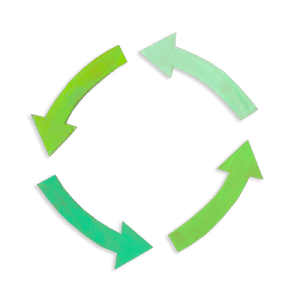Saving energy at home
Create postcards that show how to save energy and help the environment.

Overview
Students brainstorm ways to save electricity and energy and choose one action to do at home. They create a postcard to share what they did and why energy conservation and helping the environment is important.
Instructions
What you'll need
- "Saving energy at home" handout
- Construction paper cut in half
- String
Saving energy at home
- Explain that all our energy comes from the earth and when we use energy, we affect the environment.
- The power of falling water is used in most of B.C. to make clean, reliable and renewable electricity.
- Our electricity comes from water and the environment, so using less electricity helps care for the environment.
- Have students brainstorm ways they can save electricity, energy and water at home.
- Saving energy means you only use what you need and don’t waste it.
- Make a list on the board and refer to notes for ideas if needed.
- Have students choose one of these actions to save electricity, water or energy at home.
Energy conservation postcards
- Ask students what energy conservation actions they do at home.
- Give each student a copy of the "Saving energy at home" handout and half a piece of construction paper.
- In the blank box, have students draw and colour a picture of themselves and how they saved energy at home.
- In the box with writing prompts, have students complete the sentences about what they did at home to save energy and why caring for the environment is important.
- Assemble the postcards.
- Show students how to cut their template in half and glue it to both sides of the construction paper. Then punch a hole in the top left corner and tie a string through it to pin to a bulletin board so both sides of the postcards can be seen.
- Have students cut their templates in half, glue them to the construction paper and prepare them to hang on the bulletin board.
- Give students time to look at each other’s postcards.
Modify or extend this activity
Have students identify which actions are related to thermal energy and what the source of thermal energy is.
Curriculum Fit
Grade 3 Science
Big idea
- Thermal energy can be produced and transferred.
Content
- Sources of thermal energy
Curricular competencies
Questioning and predicting
- Observe objects and events in familiar contexts
Evaluating
- Identify some simple environmental implications of their and others’ actions
Grade 3 Social Studies
Content
- Relationship between humans and their environment
Curricular competencies
- Recognize the causes and consequences of events, decisions or developments
Grade 3 English Language Arts
Content
- Language features, structures and conventions - legible handwriting, sentence structure, conventions
Curricular competencies
Create and communicate (writing, speaking, representing)
- Plan and create a variety of communication forms for different purposes and audiences
- Communicate using sentences and most conventions of Canadian spelling, grammar and punctuation
Core competencies
- Social awareness and responsibility - contributing and caring for the environment
Assessments
- Assess students’ ability to follow language features, structure and conventions in their sentences on the postcards.
- Assess students’ understanding of how energy conservation helps care for the environment from their postcards.
- Assess students’ ability to take action to care for the environment using the postcards.
Teaching Notes
Energy conservation
Energy conservation is about using less energy. Once students recognize the ways they are using thermal energy at home, they can come up with ways to use less energy such as taking shorter showers, hanging clothes to dry, using cold water to wash clothes or putting on a sweater instead of turning up the heat. Every little action they can do will save energy and help care for the environment.
Tips for saving energy
- Turn off lights when you leave the room.
- Decide what you want before you open the fridge door.
- Use natural light.
- Unplug electronics when they aren’t being used.
- Wash clothes only when they’re dirty.
- Only run the dishwasher when it’s full.
- Read, play a board game or go outside instead of using electronics.
- Put on a sweater instead of turning up the heat.
- Turn down the heat at night.
- Keep windows and doors closed if the heat is on.
- Turn off the tap when brushing your teeth.
- Take shorter showers.
- Walk or bike instead of driving short distances.







